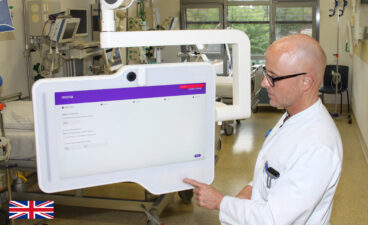VentAI: The Future of Mechanical Ventilation for Critically Ill Patients

Introduction
In the realm of critical care, the optimization of mechanical ventilation strategies for patients is paramount. Recent developments have seen the introduction of VentAI, a reinforcement learning algorithm designed to dynamically optimize mechanical ventilation regimes for critically-ill patients, offering hope for improved outcomes.
Reinforcing Optimal Ventilation
Development and Evaluation of VentAI
The objective of the work under review was to create and appraise VentAI, a cutting-edge algorithm poised to revolutionize mechanical ventilation. The development process involved building, validating, and performance-testing VentAI on a significant number of mechanical ventilation events. These events, 11,943 in total, were derived from 61,532 distinct ICU admissions, providing a robust dataset for evaluation.
Unparalleled Performance
VentAI showcased remarkable performance, with an increased estimated performance return of 83.3 (on the primary dataset) and 84.1 (on the secondary dataset of 200,859 ICU stays and 25,086 mechanical ventilation events). This performance is significantly superior compared to the 51.1 return observed with physicians’ standard clinical care.
Patient Data Utilization
Data Fingerprint
VentAI operates by extracting a “data fingerprint” consisting of 44 features from patient data, analyzed as multidimensional time series in 4-hour time steps. This comprehensive approach allows for a granular understanding of patient needs, facilitating the creation of highly personalized ventilation strategies.
Markov Decision Process & Q-learning
The algorithm utilizes a Markov decision process and a Q-learning approach to meticulously determine optimized settings for various ventilation parameters. These parameters include Positive End-Expiratory Pressure (PEEP), Fraction of Inspired Oxygen (FiO2), and Ideal Body Weight-Adjusted Tidal Volume (Vt), all critical components of effective ventilation regimes.

Optimized Ventilation Strategies
Action Recommendations
VentAI not only provides recommendations but also actively adjusts ventilation strategies, surpassing the number of recommended action changes typically made by clinicians. The algorithm consistently selects ventilation regimes with lower Vt (5–7.5 mL/kg) 202.9% more frequently, while regimes with higher Vt (7.5–10 mL/kg) are chosen 50.8% less.
PEEP Levels
In terms of PEEP levels, VentAI demonstrates a preference for levels within the range of 5–7 cm H2O and 7–9 cmH2O, recommended 29.3% and 53.6% more frequently respectively. This tailored approach ensures that patients receive the most appropriate level of end-expiratory pressure, enhancing the effectiveness of the ventilation process.
FiO2 Values
VentAI exhibits a discerning approach to FiO2 values as well. It avoids high (>55%) FiO2 values, with a notable 59.8% decrease in recommendations for such levels. Conversely, there’s a 140.3% increase in the recommendation of FiO2 values within the 50–55% range.
Conclusion: Towards Improved Patient Outcomes
VentAI stands out as a beacon of innovation in the field of critical care, offering reproducible high performance and dynamic optimization of individualized ventilation strategies. Through its meticulous analysis and decision-making process, VentAI not only matches but significantly exceeds the performance of standard clinical care provided by physicians.
Its algorithmic approach allows for the dynamic and precise adjustment of ventilation parameters, potentially leading to improved outcomes for critically ill patients reliant on mechanical ventilation. With VentAI, the future of mechanical ventilation appears not only promising but also geared towards delivering enhanced patient care and improved survival rates in ICUs worldwide.


